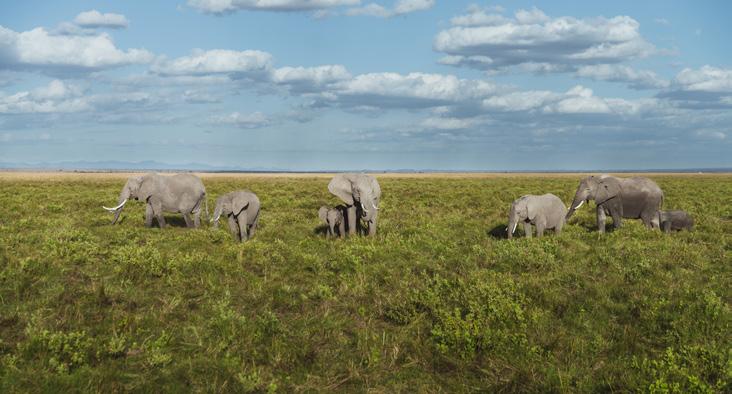
2 minute read
Connect & Buy with Leonard Joel
22ND REPORT
As Wildlife and People Run Out of Space, We’re Creating Room to Roam —
Today, more than 150,000 elephants roam across increasingly fragmented landscapes of Eastern and Southern Africa. More than 60% of their range lies outside of formal protection, exposing them to threats and human-wildlife conflict. Climate change compounds the threat of broken landscapes, with animals like elephants risking their lives and traveling further than ever to seek essential water and food for survival.
But IFAW (International Fund for Animal Welfare) sees an ambitious yet actionable solution.
IFAW believes every species and every habitat has the ability to bounce back. To thrive, elephants need safe routes to roam freely through countries, over borders, and at a distance from humans. They need access to healthy habitats for food and water, and the natural space to stabilise and thrive.
To achieve this, IFAW has a new and visionary approach to conservation—Room to Roam—which is backed by more than 20 years of science, fieldwork, and true engagement with local communities. Room to Roam is an ambitious approach, and an urgent one. It will ensure the persistence of viable and stable elephant populations long into the future. Through connectivity, secure habitats, and by bringing people together, we will create safe passages for elephants and other wildlife to move freely within their home range of Eastern and Southern Africa.
The long-term approach to achieving Room to Roam is protecting connected and secure landscapes across Eastern and Southern Africa, allowing elephants and people to thrive together in the face of perilous threats like climate change. This network of resilient landscapes is critical for wildlife populations to persist over time and to prevent a large-scale and irreversible biodiversity crisis in Africa.
It’s a vision I lead for IFAW, but it’s not something we can do alone.
It’s about forging partnerships with communities, traditional leaders, governments, private sector actors, and other NGOs as part of the collective capacity to reconnect critical landscapes and allow wildlife to flourish.
And there’s more. Room to Roam doesn’t just help elephants and other wildlife—it also opens new opportunities for local communities to enhance their well-being and co-exist with wildlife. Land outside of national parks belongs to communities and private landowners, including traditional leaders, conservancies, and land trusts. By working directly with traditional leaders and communities in Africa, we’re empowering local people to be directly involved in planning and implementing long-term solutions.
The result is greater biodiversity and a natural resilience to climate change that leads to greater stability, and a future where animals and communities harmoniously coexist.
Connectivity isn’t just important to African landscapes, but Australian too. Similar to our efforts to give elephants room to roam, we have been working to restore and connect critical wildlife habitats along Australia’s east coast. This has been more important than ever with climate change continuing to increase the frequency and intensity of disasters, further fragmenting and destroying habitats already broken by land clearing and development.
ABOVE: Photo credit: © Donal Boyd
OPPOSITE: Room to Roam map © IFAW
Jimmiel will be talking about the importance of connectivity in conservation at the Connecting People, Connecting Nature conference hosted by our partners at the Great Eastern Ranges on October 18 and 19. Find out more at the above QR code.










